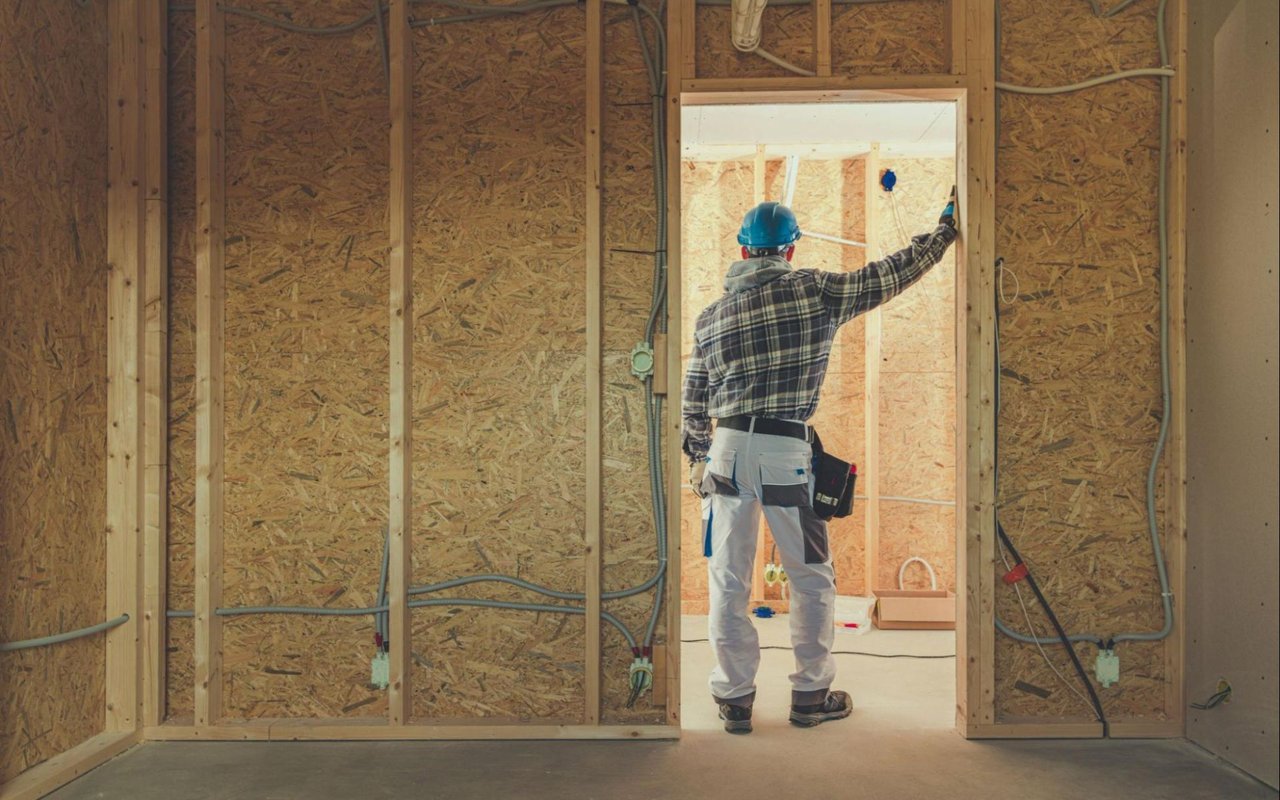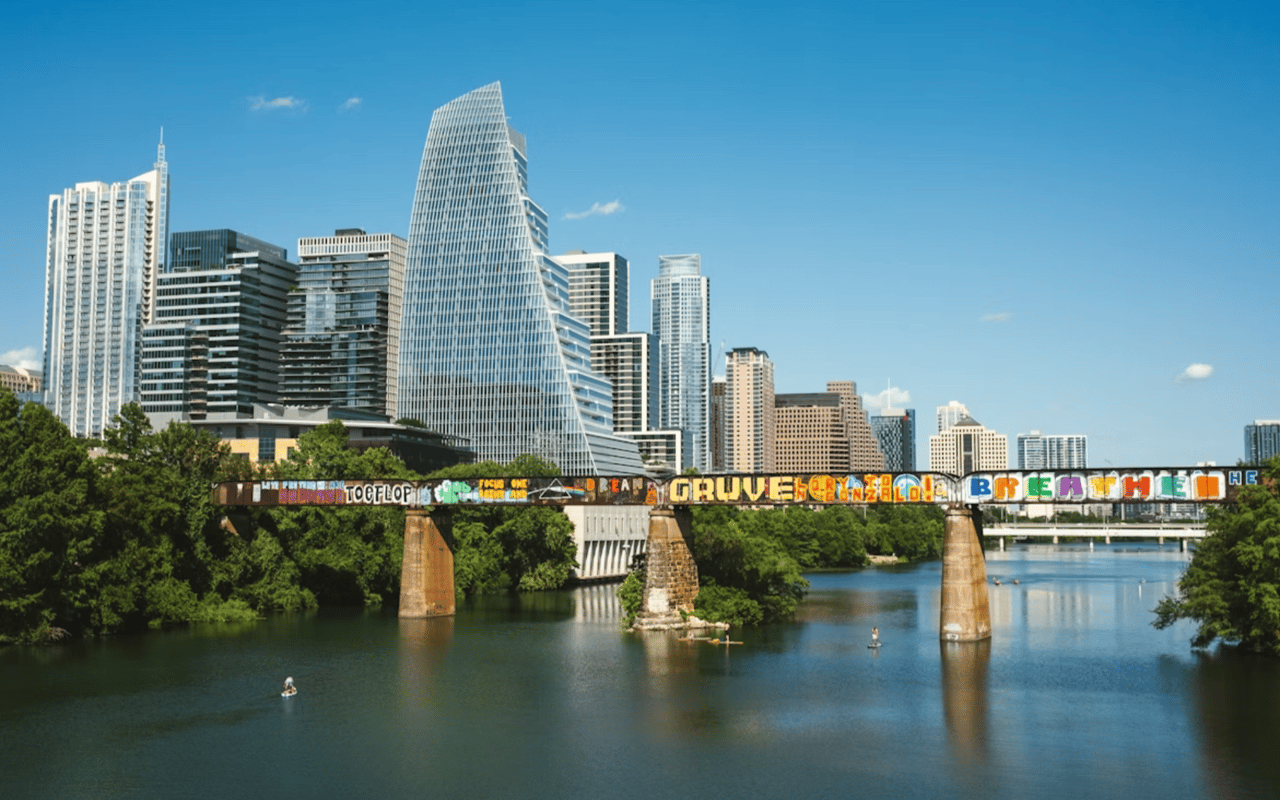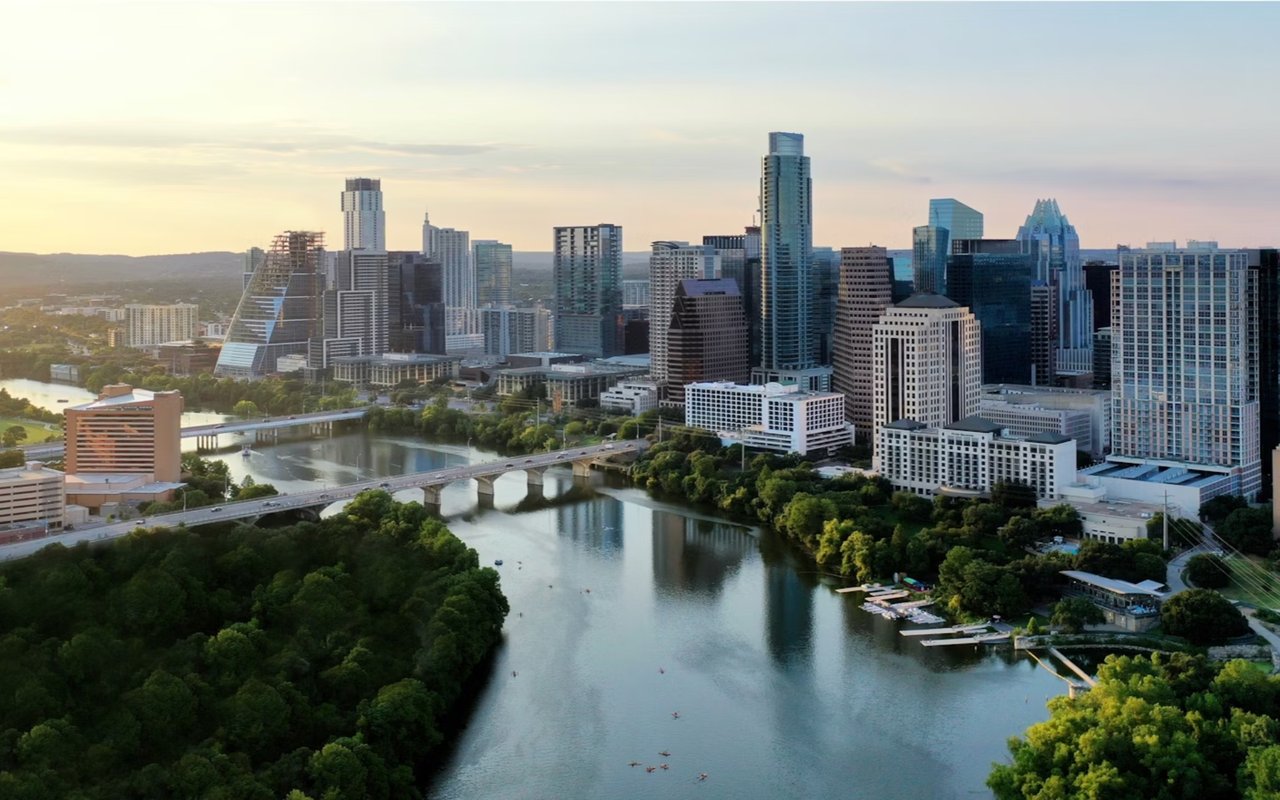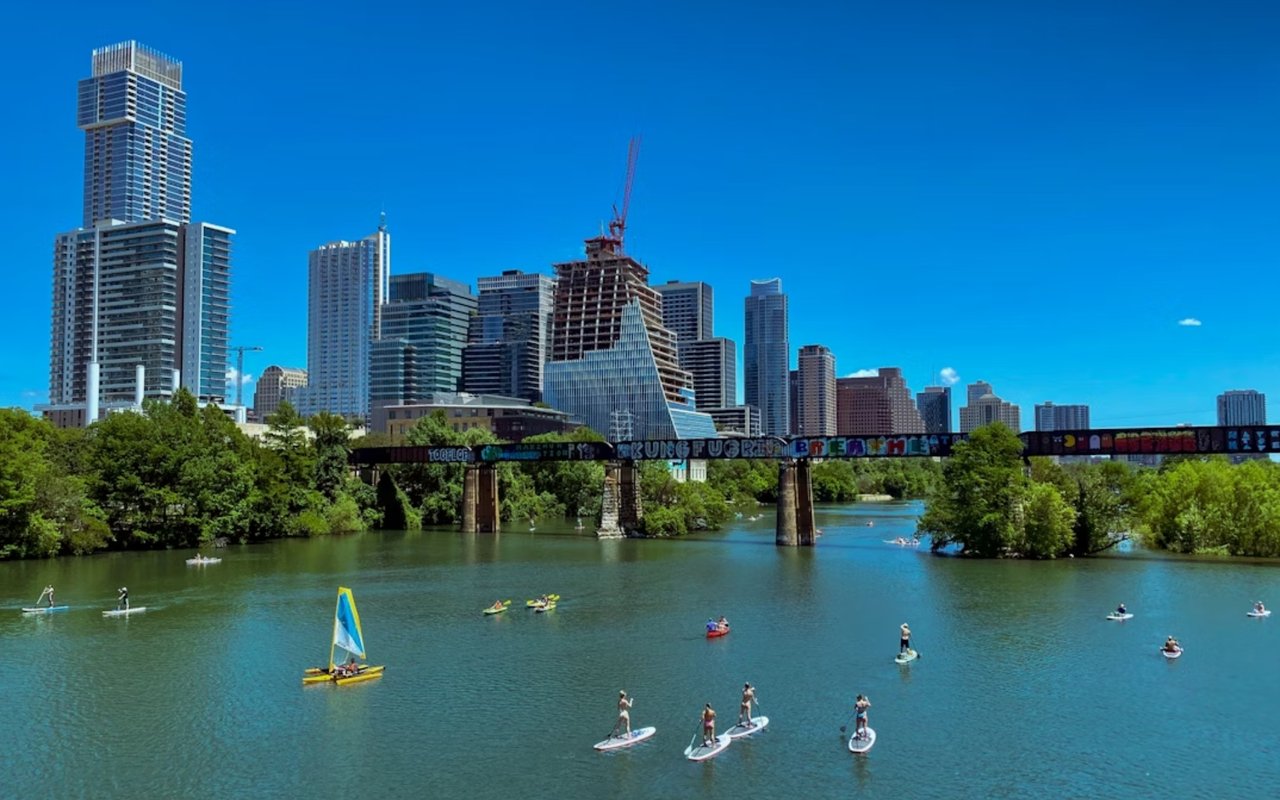
How Market Cycles Affect Land Banking and Development in Austin, TX
Real Estate Education July 8, 2025

Real Estate Education July 8, 2025
In the world of real estate investment and development, few factors are as influential, or as often misunderstood, as market cycles. These natural, recurring phases in the economy determine everything from property values and construction costs to buyer demand and the availability of capital. For those involved in land banking and development, especially in a dynamic and fast-growing city like Austin, TX, understanding these cycles is essential.
Land banking, the strategic acquisition of undeveloped or underutilized land, relies heavily on timing. Purchasing land at the wrong point in the cycle can tie up capital in an asset that delivers no short-term return and carries significant holding costs. On the other hand, securing land during a downturn and developing as the market rebounds can lead to substantial upside. In Austin, where zoning reforms, infrastructure expansion, and economic growth continue to reshape the landscape, strategic timing can be the difference between a marginal gain and a transformative investment.
This blog will break down how real estate market cycles affect land acquisition and development in Austin, and why forward-thinking investors and developers must align their strategy with these shifting conditions to maximize their returns.
Real estate operates on a cyclical pattern, typically moving through four main phases: expansion, peak, contraction, and recovery. These phases influence not just property values, but also development timelines, investor confidence, and access to financing. Recognizing where Austin sits in this cycle at any given time is crucial for anyone looking to bank land or initiate development.
During the expansion phase, the market experiences rising demand, declining vacancy rates, and increasing construction activity. Prices and rents begin to climb steadily, and developers often rush to meet demand. This is generally a favorable time to begin construction, although land prices tend to be higher due to growing competition.
The peak phase is the height of the cycle, prices are at their highest, new construction is at its most aggressive, and the market appears to be at full strength. However, it's also the most vulnerable point. Costs for land, labor, and materials are inflated, and any missteps in timing can expose developers to serious risk if the market suddenly turns.
Next comes the contraction phase, where demand slows, inventory builds up, and pricing levels off or begins to decline. Financing becomes more restrictive, and development projects are either paused or abandoned. While this period often discourages new activity, it’s actually a prime opportunity for land banking, as sellers may be more flexible and land prices often dip.
Finally, the recovery phase signals the start of renewed momentum. Prices begin to rise slowly, confidence returns to the market, and smart capital starts flowing back in. For investors and developers who secured land during the downturn, this is when entitlement and preparation can take place to be ready for the next wave of growth.
It's also important to note that land values don't always follow the same curve as built properties. Land is speculative and responds more sharply to shifts in sentiment and policy. In high-growth markets like Austin, even during downturns, specific corridors may continue to appreciate due to rezoning, infrastructure investment, or scarcity. This nuance makes understanding local dynamics and broader cycles equally important.
Land banking is the practice of purchasing undeveloped or underutilized land with the intent to hold it until it can be sold or developed at a significantly higher value. It’s not a short-term play. It’s a long-term strategy rooted in patience, foresight, and market awareness. In cities like Austin, where urban expansion, infrastructure upgrades, and zoning changes can rapidly increase land desirability, land banking has become a favored move for both institutional investors and forward-looking developers.
The typical land banker isn't always looking for immediate returns. Instead, they focus on strategic positioning, acquiring parcels in the path of growth, near upcoming transit expansions, or in areas flagged for future rezoning. Investors in this space range from large-scale development firms and REITs to private equity groups and even individual investors with strong local insight. Their shared goal is to secure land at today’s prices and exit or build when the market offers peak conditions.
However, successful land banking hinges on three core elements: location, zoning, and holding capacity.
Location is the most obvious factor. Land closer to future growth corridors, infrastructure improvements, or economic hubs is more likely to appreciate over time. But beyond proximity, savvy land bankers also monitor city plans, zoning maps, and proposed development overlays.
Zoning determines what can be built and when. Land that’s already entitled or zoned for high-density or mixed-use development holds a premium. On the flip side, raw land in need of rezoning may offer a greater discount upfront but requires more capital, time, and political navigation to unlock its full potential.
Finally, holding capacity, or the ability to maintain ownership over several years without income, makes or breaks a land banking strategy. Carrying costs include property taxes, insurance, maintenance, and sometimes debt service. Without the financial ability to absorb these costs while waiting for the market to turn, investors risk being forced to sell early, often before realizing the asset’s full upside.
In land banking and development, when you buy is just as important as what you buy. Market timing can dramatically influence acquisition costs, entitlement feasibility, and long-term ROI. The best opportunities often arise not when the market is hot but when it's cooling or starting to recover.
Buying land during a downturn or early recovery phase allows investors to secure property at below-peak pricing, often with more flexible terms from sellers under pressure. These windows also tend to have less competition, giving buyers more leverage to negotiate and more freedom to conduct due diligence without being rushed. In Austin, where land values have historically appreciated sharply during each upswing, entering the market just before momentum returns can generate substantial upside.
Take 2009 as an example. After the 2008 financial crisis, land prices in Austin dipped alongside reduced construction activity and tighter financing. Those who acquired land during this contraction (particularly in East Austin, Mueller, or along future transit corridors) saw exponential gains over the next decade as the city rebounded and demand surged. A similar pattern emerged following the early phase of the 2020 pandemic, when uncertainty stalled deals briefly. Investors who acted in mid-to-late 2020 secured properties that appreciated quickly once development rebounded and buyer demand accelerated.
However, caution is critical during the peak phase of the market. Land prices tend to be inflated, driven more by competition than by fundamentals. Entitlement processes often become slower due to permitting backlogs, while construction costs are at their highest. Investors who acquire at this point without a clear exit strategy risk overpaying and holding land through the next contraction, potentially for years before seeing any return.
Red flags during a peak phase include overly optimistic projections from sellers, bidding wars on raw land, and heavy speculative buying in fringe areas without infrastructure support. In Austin, this was visible in certain outlying suburbs between 2021 and early 2022, where land prices outpaced buildable demand and some projects were shelved once interest rates rose.
The bottom line: buying land during market lulls takes courage and capital; but for those with patience, it’s where the biggest opportunities lie.
Entitlement and permitting are critical components of the land development process, and their timing can make or break a project’s success. In a market like Austin, where regulatory oversight is complex and demand for permits often outpaces the city’s capacity to process them, navigating this system requires both strategic foresight and a strong sense of timing within the market cycle.
During peak market conditions, the volume of development applications surges. Builders, investors, and institutional developers all compete to push their projects forward while demand is high. As a result, city departments become overwhelmed, leading to longer approval timelines, delayed inspections, and increased frustration. This not only slows down project delivery but also raises holding costs and adds risk to pro forma assumptions. In some cases, projects become financially unviable simply due to prolonged bureaucratic delays during these hot market phases.
In contrast, downturns present a more favorable window for entitlements and permitting. With fewer new applications flowing into the system, the city’s planning and permitting offices are less backlogged. Developers can often move through zoning changes, site plan approvals, and infrastructure coordination more efficiently. Even if construction is delayed until the recovery phase, securing entitlements during a quieter period positions investors to act quickly once market conditions improve.
Austin’s permitting process is also evolving. With zoning reforms like the HOME initiative and ongoing debates around land use policy, regulatory timing has become a central strategic factor for landowners. Investors who begin the entitlement process during a downturn, or just before new zoning overlays are adopted, can unlock additional density or mixed-use potential ahead of the curve.
Ultimately, entitlement value accelerator. But it only adds value when it aligns with the right phase of the cycle. For land bankers and developers in Austin, using slower market periods to entitle property ensures they’re ready to build or sell when demand returns, and not stuck in a bottleneck when the opportunity strikes.
One of the defining challenges in land banking is balancing the ongoing costs of holding raw land with the potential for future appreciation or development profits. Unlike income-producing real estate, undeveloped land typically generates no revenue. It’s a passive asset that requires active financial management—and long-term conviction.
The carrying costs of land in Austin can include annual property taxes, liability insurance, occasional maintenance (clearing, fencing, drainage), and, if financed, interest payments. These costs accumulate regardless of whether the land’s value increases. Without a clear exit strategy or timeline for development, even prime parcels can become financial burdens.
However, the upside of land banking becomes clear during well-timed market moves. For example, investors who acquired land in East Austin in the early 2010s, before the area saw widespread revitalization, were able to secure entitlements and then either sell to developers at a premium or launch projects that captured rising demand. Similarly, those who bought near the Domain or along South Congress prior to infrastructure upgrades saw major jumps in land value once the surrounding areas transformed.
A particularly strong reward scenario is entitled land sold during a boom. Once a parcel has zoning, infrastructure approvals, or even full site plans in place, it becomes far more attractive to builders and institutional buyers. This allows investors to exit without building, capturing the uplift in land value tied to reduced development risk.
Another path is timed development entry, where land is acquired and entitled during slower market phases, with construction launching just as buyer demand returns. This strategy was evident in North Austin and along SH-130, where several projects that started entitlement during the 2020–2021 slowdown entered the market in time to meet renewed demand in 2023–2024, securing favorable pricing and absorption rates.
Still, the risk remains real: holding too long, or buying in a location without clear growth drivers, can lead to stagnant value and mounting costs. That’s why managing the timing of acquisition, entitlement, and exit, based on both macro cycles and local planning signals, is essential for realizing gains without getting caught in a long, expensive wait.
Maximizing returns in land development requires more than simply buying low and selling high; it requires a strategy that aligns each step of the process with the right phase of the market cycle. In Austin’s volatile and fast-moving market, the ability to shift tactics depending on cycle position is key to reducing risk and capturing upside.
During contraction, the focus should be on holding and positioning. This is not the time to build or aggressively pursue entitlements unless capital is secure and costs are manageable. Instead, this phase favors strategic patience—monitoring city plans, watching infrastructure announcements, and identifying distressed sellers or undervalued areas for future opportunity. Land acquired during this period is often priced at a discount, but developers must be prepared to hold for multiple years before conditions improve.
Recovery is the ideal phase to initiate entitlements and infrastructure planning. Demand begins to return, construction costs stabilize, and the city’s permitting systems are less congested. Developers who start zoning changes, site design, or subdivision approvals during this window can be ready to break ground just as the market enters full expansion. In Austin, recovery periods are often marked by quiet growth in underbuilt areas and early signs of investor interest in emerging corridors.
Expansion is when developers should build, market, and if timed correctly, exit. Buyer demand is strong, financing is more accessible, and absorption rates tend to accelerate. This is the payoff phase for those who planned during the recovery and held through the downturn. However, it’s also a time when material and labor costs can rise quickly, and delays in permitting or supply chains can cut into margins. In Austin, expansion has historically favored areas with transit access, walkable mixed-use zoning, and established schools or employment hubs.
By the peak phase, caution becomes essential. Prices are at or near their ceiling, competition is fierce, and construction costs often surge. Buyer fatigue may set in, and entitlement timelines tend to slow due to municipal backlogs. New acquisitions at this stage carry the most risk, as any cooling in the market can quickly erode projected returns. Investors active during a peak should focus on wrapping up projects already in motion or consider exiting certain positions before the next contraction sets in.
As of mid-2025, Austin's real estate market sits in a transitional phase, neither in full contraction nor full expansion. Inventory levels have risen modestly from historic lows, signaling a slight cooling in buyer urgency, but pricing remains relatively stable. Days on market are lengthening across some submarkets, while the average sale-to-list ratio has dipped just below 100%, giving buyers slightly more leverage than they had in 2021–2022. These signals suggest Austin is hovering in a late-recovery to early-expansion stage.
On the entitlement side, activity has picked up. Developers are actively preparing projects, especially in areas expected to benefit from zoning reform or major infrastructure investments. The City of Austin continues to work through backlogs caused by previous development surges, but permitting times are more favorable now than during the last peak. This creates an attractive window for investors to entitle land before the next wave of construction demand hits.
In the short term, developers should be cautious with new builds unless located in highly desirable or supply-constrained areas. Rising construction costs, mixed economic signals, and elevated interest rates still present headwinds. However, in the long term, Austin’s fundamentals (strong in-migration, tech sector stability, expanding public transit, and zoning liberalization) support continued growth in both urban core and fringe markets.
Areas with the strongest potential for value growth include:
East Riverside and East MLK, where TOD overlays and redevelopment incentives align with rising demand.
North Austin and The Domain, due to ongoing commercial expansion and transit connectivity.
Del Valle, Manor, and SH-130 corridor suburbs, where affordability, land availability, and infrastructure growth converge.
For land bankers and developers, now is the time to act on entitlement, selectively acquire land in high-upside zones, and position for full-scale build-out as expansion momentum builds over the next 12–24 months. The opportunity lies not in chasing the current market, but in preparing for where it’s heading next.
In Austin’s fast-evolving landscape, timing remains one of the most powerful tools a land investor or developer can wield. Understanding where the city stands in the market cycle, and adjusting your acquisition, entitlement, and build-out strategies accordingly, can significantly enhance returns and reduce risk. But timing alone isn’t enough.
To succeed in land banking and development, you need a full-spectrum approach: deep knowledge of local market trends, a strong grasp of regulatory shifts, and the capital flexibility to hold and act when conditions align. In a city shaped by ongoing growth, zoning reform, and infrastructure investment, being early and prepared is far more valuable than being reactive.
If you're exploring land acquisition or considering the best time to entitle or develop your property in Austin, now is the time to plan with precision. Contact us today for a custom consultation tailored to your goals and market position.
Stay up to date on the latest real estate trends.

Why more buyers are turning to newly built homes in the Austin real estate market.

How timing the market can shape your real estate strategy in Austin and beyond.

Uncovering the unique character, culture, and quirks of Texas’s capital city.

Why a pre-listing inspection is a smart move in today’s real estate market.

Exploring Austin's end-of-year real estate market and what lies ahead in 2026.

Understanding contracts, disclosures, and protections for a smooth real estate transaction.

Where to go and what to do for an immersive cultural experience in Austin, Texas.

How a property’s age impacts its desirability, maintenance, and resale price.

Everything professionals and businesses need to know about moving to the Texas capital.
Etiam non quam lacus suspendisse faucibus interdum. Orci ac auctor augue mauris augue neque. Bibendum at varius vel pharetra. Viverra orci sagittis eu volutpat.